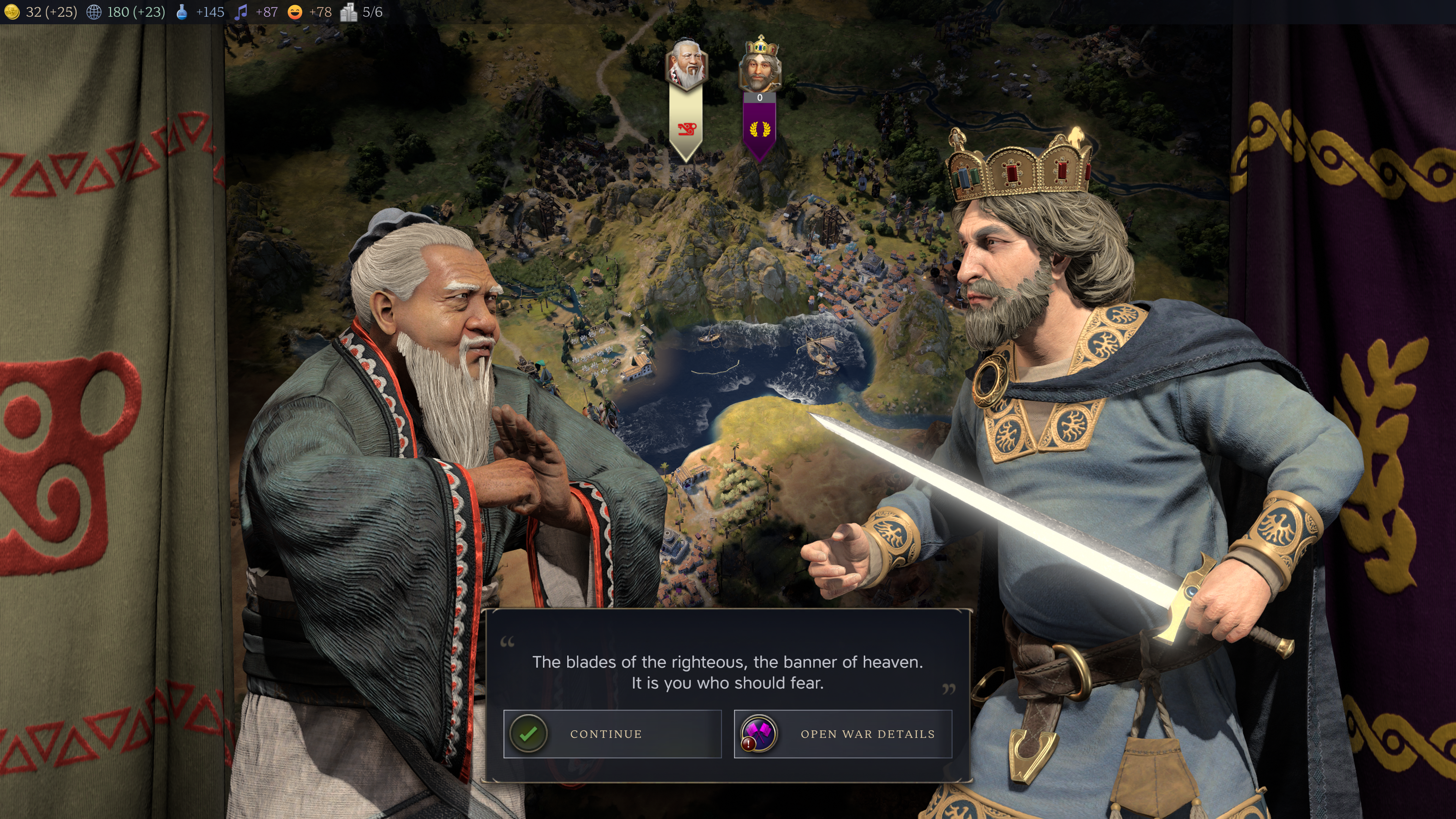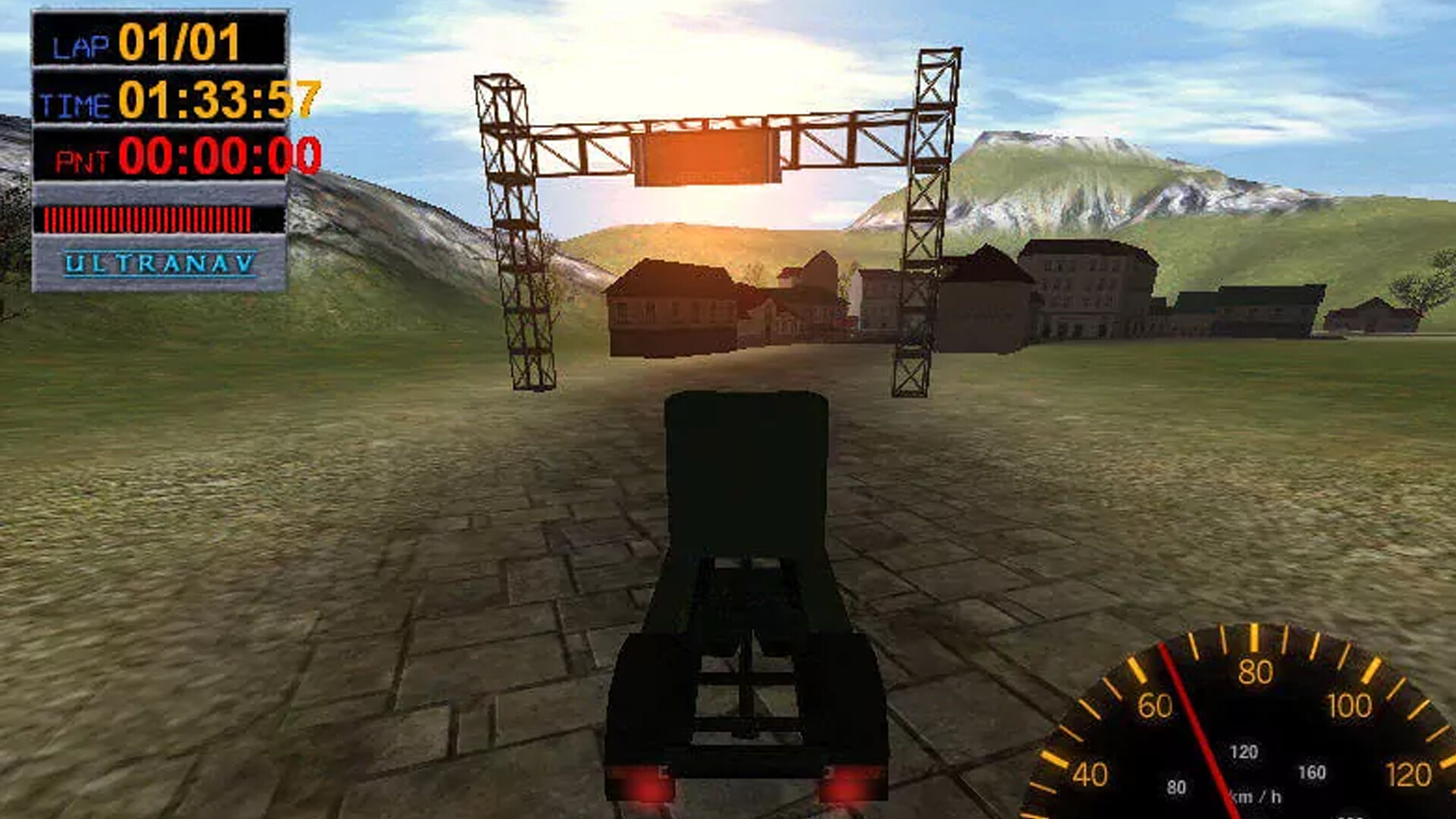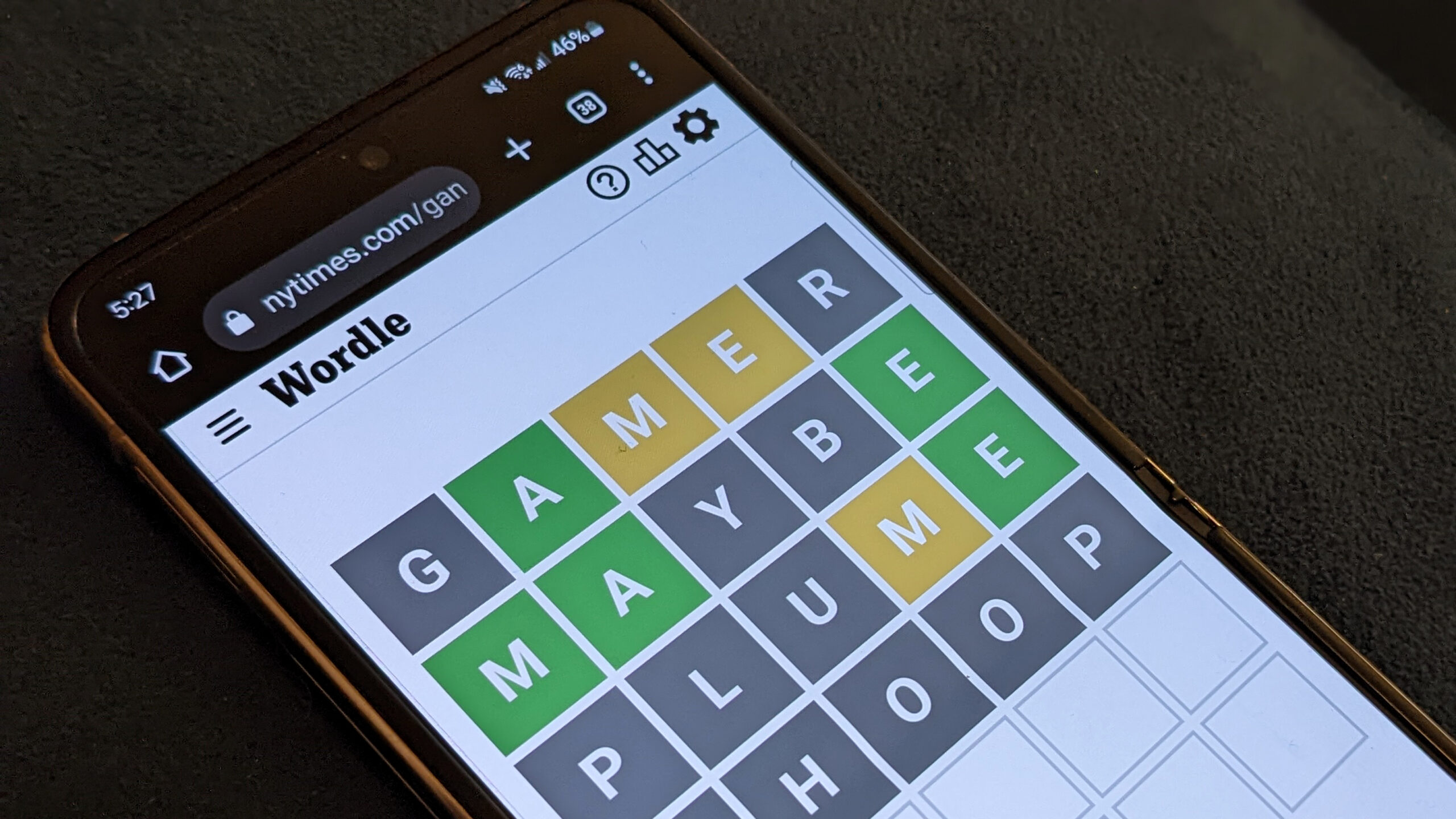Civilization 7 feels more like a series offshoot than a Civilization 6 sequel, taking the venerated grand strategy series in a different direction from the past two games. Its most radical ideas certainly offer an interesting way to play Civilization, though as things stand it doesn’t feel like the best way to play. It’s the most streamlined and pared-back the series has been in a long time, which certainly helps with accessibility and pacing—particularly in multiplayer—but may leave some yearning for the depth and mechanical diversity of its predecessors.
What is it? A 4X turn-based strategy game in which you guide an empire through the course of human history.
Expect to pay: $70/£60
Developer: Firaxis Games
Publisher: 2K Games
Steam Deck: Verified
Link: Official site
Founded in the pre-SVGA age of gaming antiquity, Civilization’s randomised yet celebratory take on human history has stood the test of time. Over three decades on, you can still put me down in front of any of the games in the series and I will spend half my waking hours for a week straight guiding my people through the ages via war, diplomacy, exploration, culture-bombing, and plonking down World Wonders before my rivals.
Over its first several entries, the series rapidly evolved to better encapsulate the vibrancy and madness of human history in a turn-based strategy format. But in more recent outings, it’s become more about rejigging rather than revolutionising that cavemen-to-cosmos saga.
Yes, Civilization 5 de-stacked units made warfare more tactical, while Civ 6 spread cities across multiple tiles to allow for more focused, thoughtful city management. But in areas like diplomacy, religion, and warfare, changes have offered alternative ways to make fun these phenomena of human history rather than pursuing some goal of ‘The Ultimate Civ Experience’. This is reflected in the fact that both Civilization 5 and 6 enjoy huge player numbers to this day; 5 is tight and balanced, 6 is big, bold, and systems-heavy, both are brilliant.
Many of the design decisions in Civilization 7 appear to be in the name of brevity and pacing, with quite a few major systems trimmed in the process. It’s still Civilization, and will still leave you snapping out of it wondering where the last few hours went, but series fans be warned: things are different now.
New age
Let’s begin with the broad strokes, and the boldest idea that Civ 7 introduces: Age transitions. Leaders and civilisations have now been separated: you keep the same leader throughout a game, but your civ will change. Each game is split into three Ages—Antiquity, Exploration, Modern—and each time you move into a new one, time skips several hundred years, and you pick from one of a bunch of new civs to lead, specific to that era. So you may start with Egypt in Antiquity, then move onto Normans in the Exploration Age, before landing on the good ol’ US of A to see you through the Modern Era. Each civ has some unique units, bonuses, and a dedicated civic tree with special policies, some of which you can carry over into the next era’s civ as ‘Traditions.’
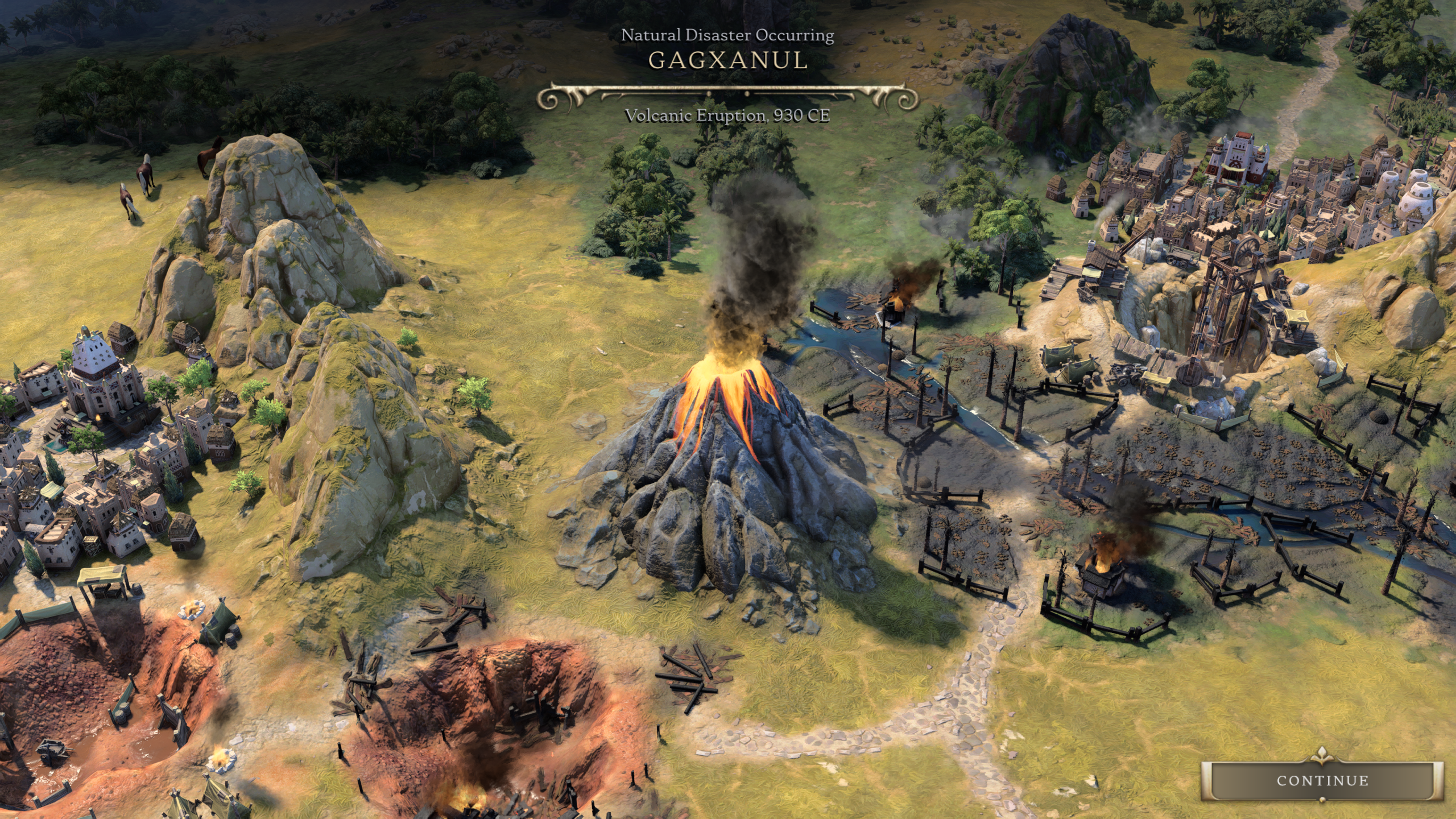
There’s a hint of the roguelike about it, as your foot-up in the next era is built on your efforts of the previous one.
That age transition is, by design, far from seamless. As you near the end of an Age, which all civs collectively reach by making progress down four linear Legacy Paths, the world will face some kind of crisis, such as plague or barbarian invasions. Once the crisis reaches its head, the current iteration of your civilisation collapses, and you pick a new one to build over its foundations.
Building on the Golden/Dark Age system introduced in the Civ 6 Rise and Fall DLC, your achievements of the previous era unlock boons for the next one. These achievements are acquired through four linear Legacy Paths—Economic, Cultural, Military, and Science—which reset at the start of each Age, with new goals relevant to that age. The more milestones you reach in each Legacy Path, the more Legacy Points you have to spend on special boons at the start of the next era, until you reach the Modern Age, where each Legacy Path leads to a victory condition. There’s a hint of the roguelike about it, as your foot-up in the next era is built on your efforts of the previous one, while also setting you back to something of a new beginning.
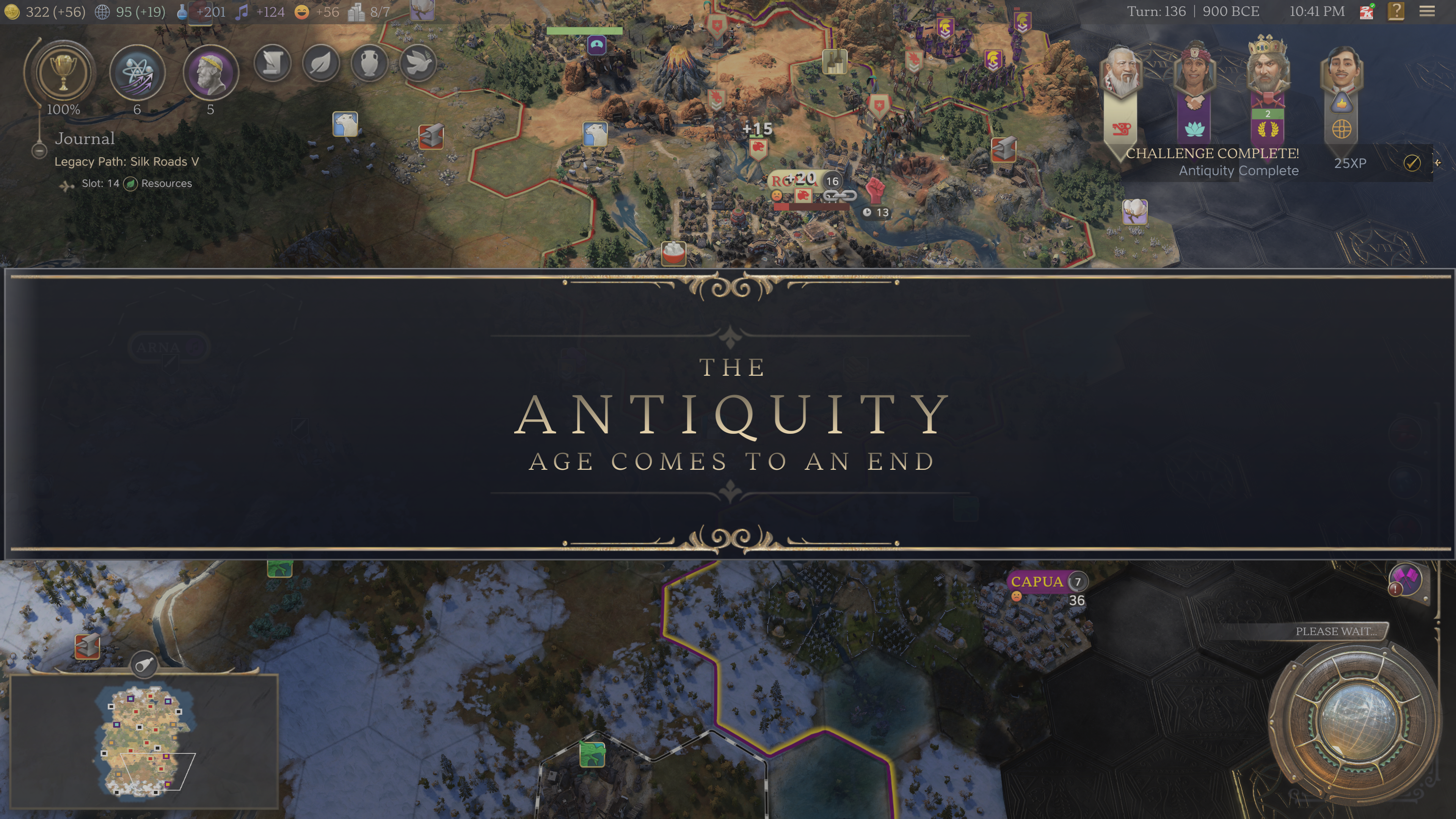
From a pacing perspective, this works wonders, because at the point in previous games where things would start getting a bit stodgy in terms of unit clutter, city micromanagement, and losing players basically being out of the victory race by the midway point, Civ 7 speeds things up and narrows the gap between the haves and have-nots. The Legacy Path victory conditions include some quite attainable ones, such as digging up artefacts for the Culture path, or industrialising your nation with railways and factories for the Economic one, and it’s not unthinkable that players who were flagging for much of the game to pull a smash-and-grab victory out of the bag. It certainly keeps things more suspenseful right up to the end.
Problems of modernity
Each era ushers in new game systems. For instance, religion only gets introduced in the Exploration Age, as does the concept of ‘Distant Lands’, which unlocks new luxury resources that you can return to your homeland via treasure fleets (the settlement of Distant Lands is also at the heart of the Military Legacy Path for this age).
By the Modern Age, the function and yields of luxuries from the Exploration Age changes, as they’re no longer exotic luxuries but common commodities that can be slotted into factories for bigger bonuses. In the modern age also, the ideologies of fascism, democracy, and communism come into play, each with their own civic trees and effects on relations with other civs. This is all good stuff, making each era feel somewhat self-contained and defined by unique goals and mechanics. It does mean that such joyful scenarios as phalanx spearmen resolutely poking at tanks, or cavemen smacking helicopters out of the sky with clubs are now gone, but if you want that, then you’re spoiled for choice with the preceding six games.
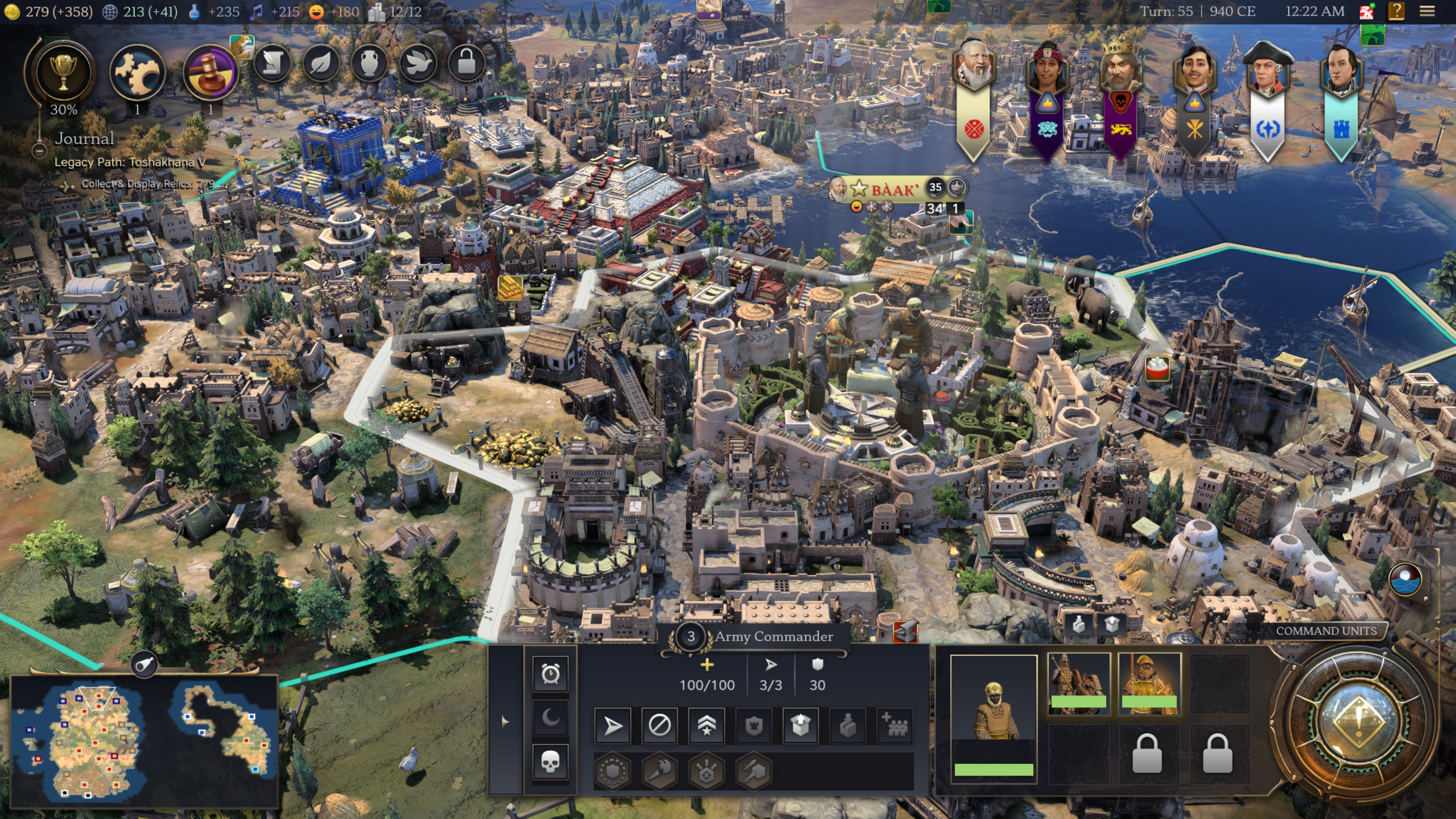
The soft resets and feature-drip of the Age system does a lot to keep the game fresh, but the Modern Age still feels weakest. Turn times don’t drag as much as in earlier games thanks to nice touches like the ability to stack military units into Commanders, and to instantly move troops between cities that have railway stations, but it lacks the focus of the ages that precede it. It’s a shame that Firaxis cut the World Congress from this outing—which allowed civs to vote on resolutions, global policies, and engage in diplomatic skulduggery like banning pearls to undermine the civs that depend on them—because it would’ve been the perfect thing to spice up the late game.
Getting resourceful
Civ’s age-old system of citizen management, whereby you could manually assign a city’s population to work specific tiles as a way of adjusting a city’s focus, has been replaced by slottable resources. So if you’ve just built a town, you can send it plenty of grub to accelerate growth, or send some gypsum over to a new distant land city that’ll give it a nice big production boost. In my relatively short time with the game so far, I’ve even managed to find some dirty little tricks with resource-slotting, like adding several camels to a city to increase its resource capacity, then building the Tomb of Askia Wonder to grant it extra gold and production for each resource in that city; I’m sure savvier Civvers than myself will find plenty of ways to meta the hell out of this new system.
The idea of distributing resources throughout your empire to where they’re most needed is a sensible one, but by the late game I had gotten a bit fatigued with the resource screen, which winds up containing dozens of little resource icons to manually micromanage. Also, you can only chop-and-change resource distribution in cities when you acquire new resources, so you no longer get those nail-biting rushes to complete a Wonder before your rivals, where you’d temporarily send a city into production overdrive, speed-build some logging camps, and deforest the surrounding area to generate as much production as quickly as possible.
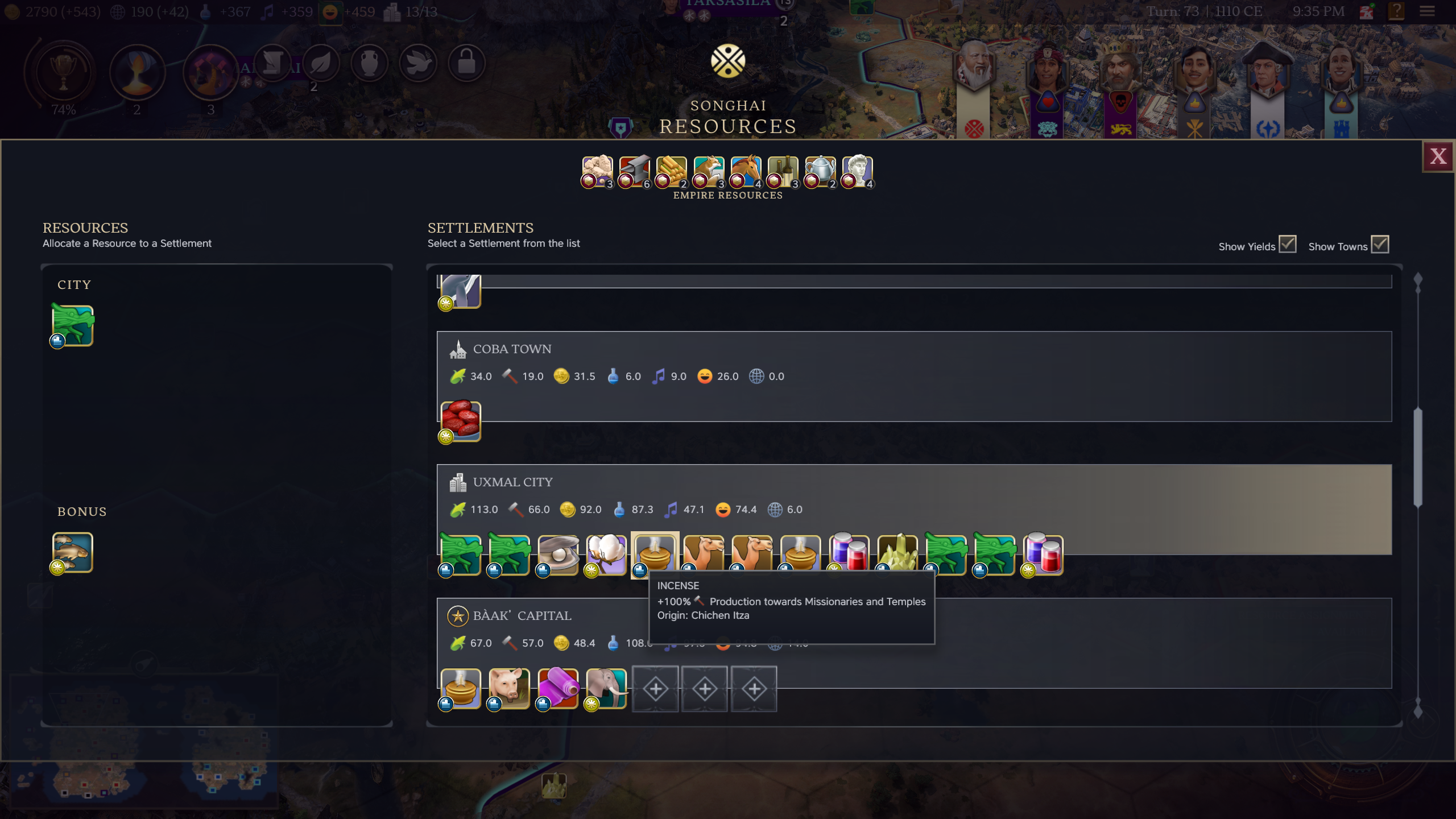
A little too often, however, Civ 7’s fat-trimming cuts into the lean part of the meat as well, losing some richness and flavour in the process.
Cities are now divided into urban districts (which can accommodate two buildings each) and rural ones. This means that you have a bit more fluidity about how you want to specialise a city, if at all. In fact, the ability to build over the previous age’s buildings almost beckons you to shift a city’s production focus across eras. For instance, a city that you founded in Antiquity as a military border stronghold might not have that same purpose a thousand years later once your borders have expanded, so why not turn it into a lucrative economic hub for the Exploration Age?
Workers, or Builders, who were previously used to improve empty tiles around your empire, have been done away with altogether, victims to automation. Instead, each time a city grows you get to instantly upgrade one tile in its vicinity with rural improvements like mines, farms, and plantations. And while I miss certain builder actions like the aforementioned forest clearances for quick-and-dirty production boosts, on balance this is a sensible cut, reducing unit clutter while retaining a key aspect of city improvement.
International relations
A little too often, however, Civ 7’s fat-trimming cuts into the lean part of the meat as well, losing some richness and flavour in the process. Diplomacy, for instance, feels very thin, and interactions with other leaders a little too transactional. Where before they’d come voicing their opinions on certain actions of yours, share little aphorisms, partake in gossip, or ask you to move your armies away from their borders, they now mainly come to you with offers for generic repeatable agreements.
This iteration of Civilization is also weirdly, well, civil.
They’re a lot less sassy this time round, and therefore less characterful (and maybe this is just film-studies-graduate-over-analytical wankery bubbling up, but the fact that they’re no longer looking out from the screen at you, but side-on at the leader you picked, makes me feel a bit detached from these interactions, like I’m the translator at their meeting rather than a leader).
Gone also is the freewheeling bargaining system where you could demand, say, a city, 5 gold per turn, and a sheep, from enemies in exchange for peace. For a start, resources are now automatically acquired from other civs when you establish trade routes, so you can’t lord over other civs by hogging or demanding extortionate prices for valuable resources that they desire. The only bargaining chips in peace treaties are cities, which the AI seems all too eager to give away; there was one point where an alliance I had meant that I was technically at war with someone way on the other side of the world, and despite having not once encountered them in battle, they offered me one of their cities in exchange for peace. Obviously, I said yes, but it was bizarre.
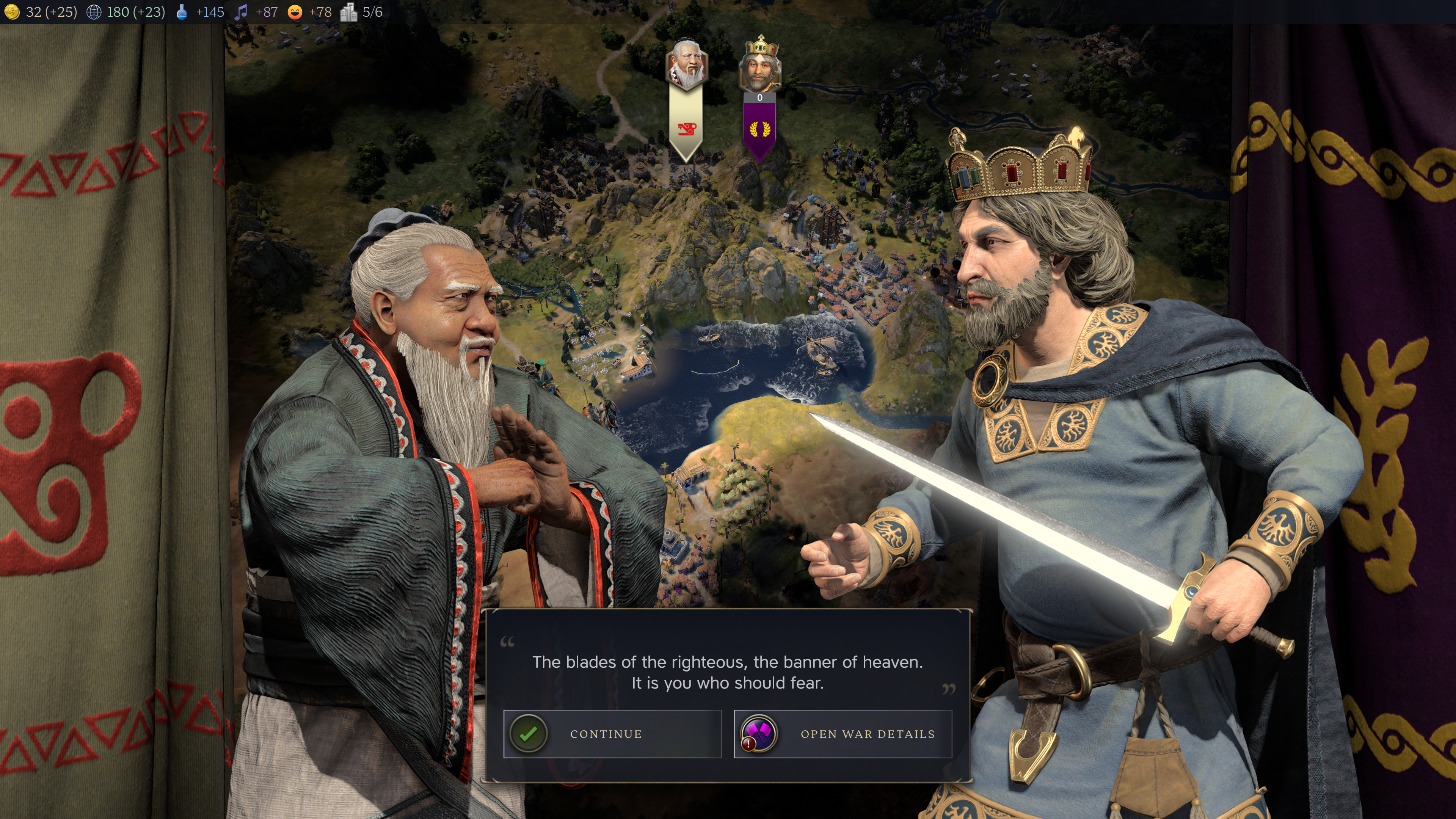
Austerity measures
This iteration of Civilization is also weirdly, well, civil. City-States and barbarians from previous games have been rolled into Independent Power—some start off hostile and effectively act as barbarians, but all can be befriended by spending enough Influence (a new currency used for every diplomatic interaction). Once you start the befriending process, you’re basically guaranteed to become their suzerain for the rest of the age unless they get wiped out.
There are no more city-state quests, and no more tussling among civs for the support of these small but important powers via envoys or outright bribery. It relegates what was once an interesting and sneaky way to gain diplomatic leverage to, effectively, the single click of a button. Espionage has received similar treatment, reducing its scope to several fairly low-impact actions, such as Steal Technology, Hinder Military Production, and Hinder Research, that you spend Influence to carry out. No more sabotaging Wonder production, spy networks, or—Civ 4, how I miss thee—feeling like you’re running your own MI5-style spy agency.
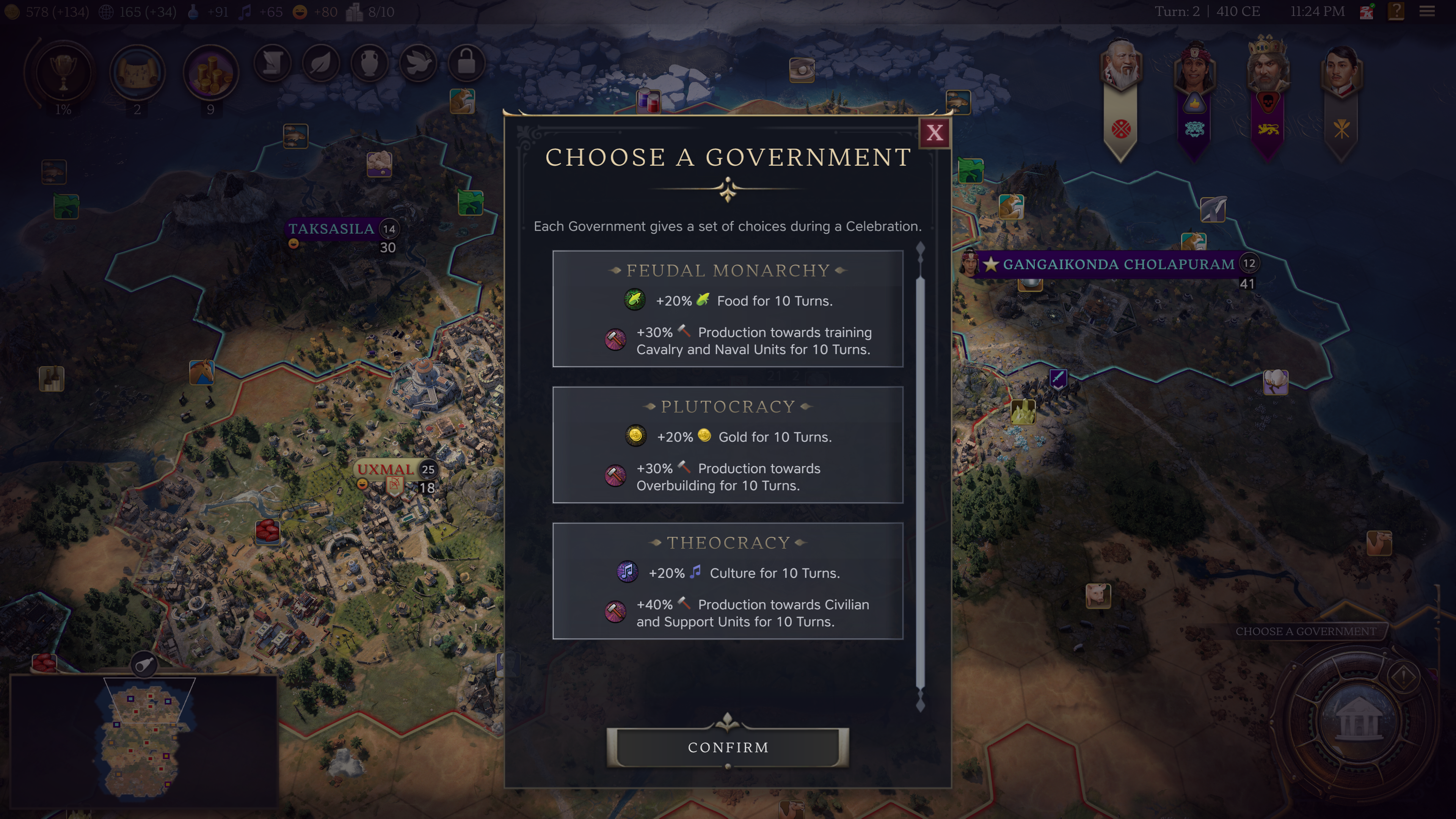
Religions and governments have also faced severe cuts. Religion somehow manages to feel both unrewarding and frustratingly hands-on to actually play, and simply involves sending missionaries to convert other cities (which you have to do on both an urban and rural tile if that city already has a religion). Converted cities no longer passively spread religion, there are no religious diplomatic effects, nor is there any of that wild religious combat that saw inquisitors striking missionaries down with divine lightning in Civ 6. Seeing as religion played a major part in each series game dating back to Civilization 4, it’s disappointing that over two decades on it’s been reduced to something so superfluous.
As for governments, you are locked into picking one per era, and all it does outside of minor diplomatic sway is affect what your choice of boosts for a bunch of turns is each time your civ enters a period of Celebration (achieved by accruing Happiness). Reducing, say, Theocracy to the occasional binary choice between a temporary Culture boost or production boost for 10 turns just doesn’t feel like a substantial reflection of that government type’s impact on a nation. Like religion, it feels like a backwards step for the series in the name of streamlining.
A looming legacy
To be clear, most of Civ 7’s shortcomings are relative to the two very fleshed out and still popular games preceding it in the series, which for me still remain at the head of the genre. I still lost track of time and reality playing it, and there are some pretty clear improvements here. Games tick along at a more even pace thanks to some clever ways of addressing unit clutter, and war feels great (even if the AI can’t entirely handle its tactical complexity). Newly navigable rivers have legitimate strategic value too, and I’ve had some great times sending dreadnoughts upriver deep into enemy civ territory to effectively bombard them from within.
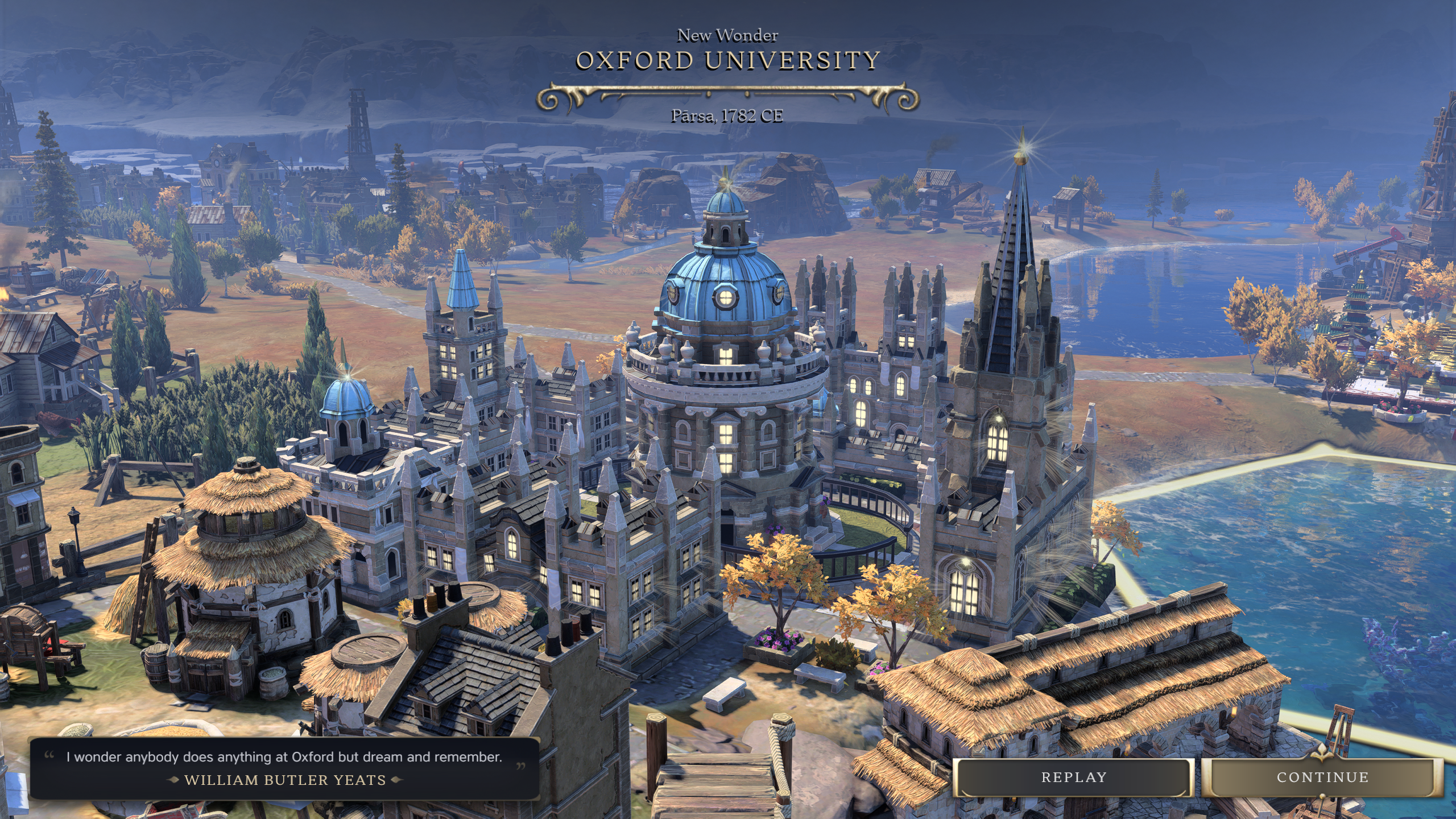
Civilization 7 feels like a reaction to the maximalism of its predecessor: sleeker and speedier, colder and less complex.
I’m also happy to see the art style build on the more grounded one of Civ 5 rather than the divisive cartoon stylings of Civ 6 (something about dropping nukes on cities that looked like they were made out of gingerbread never sat right with me). Speaking of presentation though, the UI isn’t great; it often requires one too many clicks to get the details you want, there’s no shortcut key to scroll through units, nor a way to get an overview of all your units on the map. Where similar games use nested menus and text highlighting to give you quick info about key concepts, in Civ 7 I’d need to go and type things into the Civilopedia to get basic info on things like building effects or unit combat bonuses.
Civilization 7 feels like a reaction to the maximalism of its predecessor: sleeker and speedier, colder and less complex. Being the first game in the series to come out on consoles at the same time as PC, I can’t help but feel that some of the complexity cutbacks are made with gamepad players in mind. Some of these cuts are positive, and they help the game flow better (especially, I imagine, in multiplayer), but the simplification of systems like religion, diplomacy, city-states, and espionage means that the journey through history doesn’t feel quite as rich or rewarding.
It’s as if Civ’s gone through its own age transition—a few steps forward, a few steps back. While it’s addressed some longstanding issues, there’s a little too much that’s been stripped away for veterans like myself to call this meaningful progress on the legendary series’ Legacy Path.







